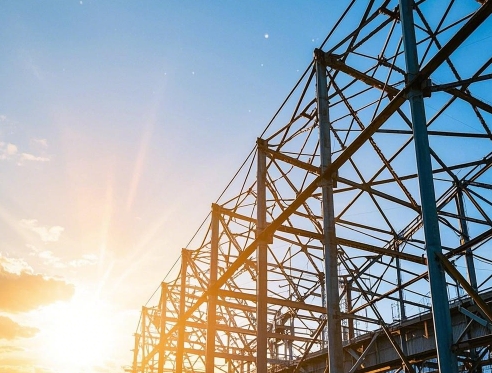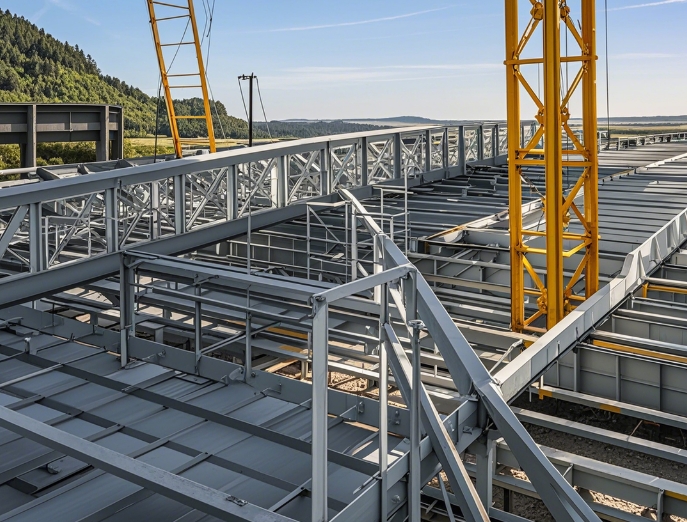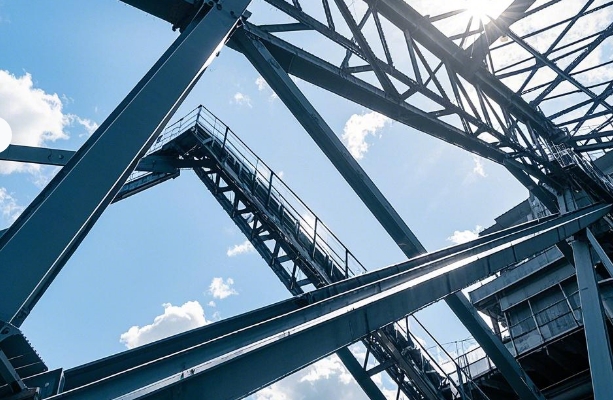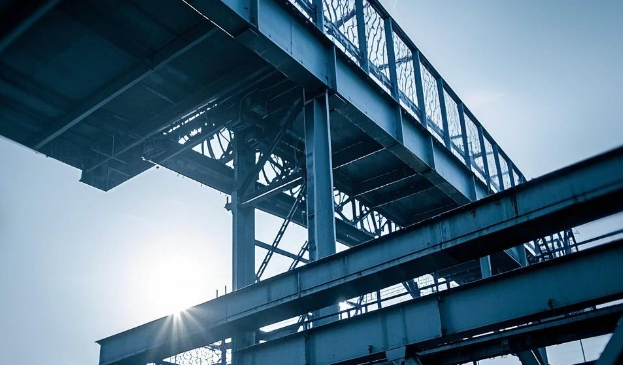Types and Design Points of Support for Grid Structure
更新时间:2025-02-13 15:08:01•点击:120895 • Grid Knowledge
The grid structure, as an efficient form of spatial structure, is widely used in various large buildings. In the grid structure, supports play a crucial role. They not only transfer the load of the grid structure to the foundation, but also need to adapt to the deformation requirements of the structure under various working conditions. Understanding the types and design points of supports for grid structures is crucial for ensuring the safety and stability of the entire grid structure.
Type of support for grid structure
Rubber bearings
Rubber bearings are a common type, among which four hole rubber mesh bearings are composed of multiple layers of rubber and multiple layers of steel plates alternately stacked and vulcanized. It has sufficient vertical stiffness and vertical bearing capacity to stably support the upper building. At the same time, it has good horizontal deformation ability, ensuring the displacement of the building under external forces and temperature conditions, and has good recovery performance, as well as good seismic isolation performance. This type of support has a simple structure, is easy to install, and has a relatively low cost.
Steel ball support
Seismic steel ball bearings: such as GKGZ steel structure seismic steel ball bearings and GKQZ steel structure seismic steel ball bearings. They can withstand vertical loads and have the ability to resist vertical tensile forces, ensuring that the upper and lower structures will not detach in the event of a vertical earthquake; It also has the function of resisting horizontal force, preventing structural detachment during horizontal earthquakes; It can also adapt to radial and circumferential displacement requirements, as well as any direction of rotation requirements.
Shock absorbing steel ball bearings: GJGZ steel structure shock absorbing steel ball bearings and GJQZ steel structure shock absorbing steel ball bearings not only have the performance of the above-mentioned seismic steel ball bearings, but also have excellent shock absorption effects. Steel ball bearings use spherical transmission of force to avoid force concentration, resulting in a more uniform distribution of force on the upper and lower structures. They do not require rubber compression and are not negatively affected by rubber aging, resulting in a longer lifespan.
Key points of support design for grid structure
Bearing capacity design
Accurately calculate the vertical bearing capacity, horizontal resistance, and vertical tensile strength of the support based on the vertical load, horizontal load, and possible seismic effects borne by the grid structure. For example, the vertical bearing capacity of supports is usually divided into multiple levels, ranging from 300KN to 10000KN, and the appropriate level needs to be selected based on the actual load size during design. At the same time, it is necessary to consider the most unfavorable force combination of the support under different working conditions to ensure that the support has sufficient strength and stability.
Displacement and Rotation Design
Fully consider the displacement and rotation of the grid structure under factors such as temperature changes, wind loads, and seismic effects. The support should be able to adapt to radial and circumferential displacement requirements as well as any direction of rotation requirements. For example, the radial displacement of the support can vary between ± 20mm and ± 50mm, the circumferential displacement can reach ± 60mm to ± 100mm, and the design angle is generally 0.08rad (adjustable according to customer needs) to ensure that the support does not impose excessive constraints on the structure during deformation and cause structural damage.
Shock absorption design (for shock absorber supports)
For shock absorbers, emphasis should be placed on designing their shock absorption performance. By selecting the materials, structural forms, and mechanical parameters of the bearings reasonably, the bearings can effectively consume energy and reduce the seismic response of the structure under dynamic forces such as earthquakes. For example, by utilizing special structures or damping materials inside the support, seismic energy can be converted into other forms of energy such as thermal energy and dissipated.
Design of structural connections
Ensure the reliable connection between the support and the grid structure, as well as the lower foundation. The connection method should meet the requirements for transmitting loads, while considering ease of installation and maintenance. When designing connection nodes, detailed force analysis should be conducted to ensure the strength and stiffness of the nodes and prevent connection failure under load.
Type of support for grid structure
Rubber bearings
Rubber bearings are a common type, among which four hole rubber mesh bearings are composed of multiple layers of rubber and multiple layers of steel plates alternately stacked and vulcanized. It has sufficient vertical stiffness and vertical bearing capacity to stably support the upper building. At the same time, it has good horizontal deformation ability, ensuring the displacement of the building under external forces and temperature conditions, and has good recovery performance, as well as good seismic isolation performance. This type of support has a simple structure, is easy to install, and has a relatively low cost.
Steel ball support
Seismic steel ball bearings: such as GKGZ steel structure seismic steel ball bearings and GKQZ steel structure seismic steel ball bearings. They can withstand vertical loads and have the ability to resist vertical tensile forces, ensuring that the upper and lower structures will not detach in the event of a vertical earthquake; It also has the function of resisting horizontal force, preventing structural detachment during horizontal earthquakes; It can also adapt to radial and circumferential displacement requirements, as well as any direction of rotation requirements.
Shock absorbing steel ball bearings: GJGZ steel structure shock absorbing steel ball bearings and GJQZ steel structure shock absorbing steel ball bearings not only have the performance of the above-mentioned seismic steel ball bearings, but also have excellent shock absorption effects. Steel ball bearings use spherical transmission of force to avoid force concentration, resulting in a more uniform distribution of force on the upper and lower structures. They do not require rubber compression and are not negatively affected by rubber aging, resulting in a longer lifespan.
Key points of support design for grid structure
Bearing capacity design
Accurately calculate the vertical bearing capacity, horizontal resistance, and vertical tensile strength of the support based on the vertical load, horizontal load, and possible seismic effects borne by the grid structure. For example, the vertical bearing capacity of supports is usually divided into multiple levels, ranging from 300KN to 10000KN, and the appropriate level needs to be selected based on the actual load size during design. At the same time, it is necessary to consider the most unfavorable force combination of the support under different working conditions to ensure that the support has sufficient strength and stability.
Displacement and Rotation Design
Fully consider the displacement and rotation of the grid structure under factors such as temperature changes, wind loads, and seismic effects. The support should be able to adapt to radial and circumferential displacement requirements as well as any direction of rotation requirements. For example, the radial displacement of the support can vary between ± 20mm and ± 50mm, the circumferential displacement can reach ± 60mm to ± 100mm, and the design angle is generally 0.08rad (adjustable according to customer needs) to ensure that the support does not impose excessive constraints on the structure during deformation and cause structural damage.
Shock absorption design (for shock absorber supports)
For shock absorbers, emphasis should be placed on designing their shock absorption performance. By selecting the materials, structural forms, and mechanical parameters of the bearings reasonably, the bearings can effectively consume energy and reduce the seismic response of the structure under dynamic forces such as earthquakes. For example, by utilizing special structures or damping materials inside the support, seismic energy can be converted into other forms of energy such as thermal energy and dissipated.
Design of structural connections
Ensure the reliable connection between the support and the grid structure, as well as the lower foundation. The connection method should meet the requirements for transmitting loads, while considering ease of installation and maintenance. When designing connection nodes, detailed force analysis should be conducted to ensure the strength and stiffness of the nodes and prevent connection failure under load.
Recommended Reading
-
Full analysis of seismic design and maintenance of grid structure
2025-02-27 16:16:52•671641 次
-
What are the key process points to follow in order to ensure the quality of grid processing?
2025-02-27 11:21:00•107735 次
-
What type of construction is the grid mainly suitable for?
2025-02-25 16:42:00•104205 次
-
Quality control requirements of grid manufacturers!
2025-02-25 16:02:44•199398 次






